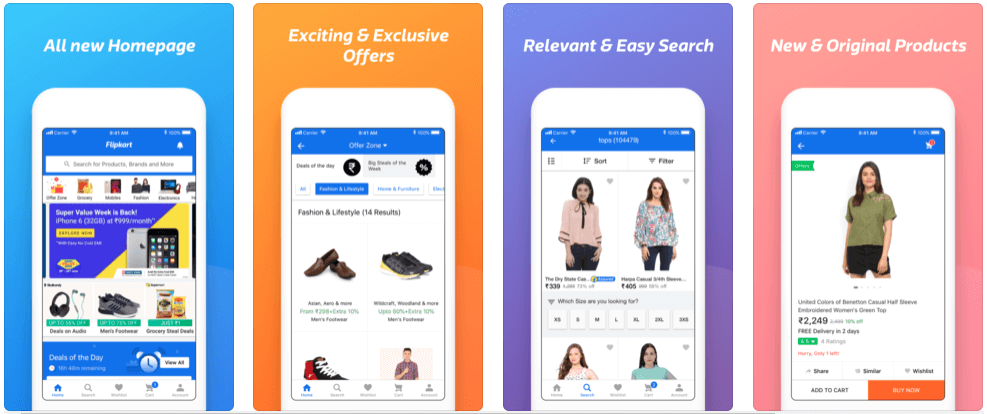Types of stores for mobile commerce
Usually, online shopping applications are selling such good as:
* Clothes
* Cosmetics
* Products and beverages, especially exclusive ones
* Sporting goods
* Medications
* Kitchen appliances
* Housewares
* Computer hardware and home appliances of any kind
Admin Interface:
1. Account registration: The admin can register by providing the details and can access the account.
2. Managing orders: As soon as the order is placed by the customer the admin checks for the order and can assign the order to the delivery representative who is free to do the delivery.
3. CMS: The admin can edit, modify, delete the necessary content and publish so that the user is aware of the items which are available and not available. Moreover, if the app is an aggregator kind of model then various restaurants would be taking care of their relevant content to publish and if you own the app then you must make sure of intricate details such as contact number, location, etc. are updated correctly.
4. Updating: As soon as the order is received and food is prepared and the delivery boy is ready to deliver the food, the admin can change the status so that the app user is acknowledged that the food is about to be delivered.
5. Coupons/Offers: Admins can offer exciting rewards, coupons etc. to the regular customers and can also welcome new customers by providing discounts and so on.
6. Notifications: The admins can send the appropriate notifications to the customers so that they are made aware of the recent updates, etc.
7. Google Analytics: The admin can use this attribute to find out the progress of the business so far and can know if the progression is positive or negative based on the returns, etc.,
8. Verification of documents: The admins can verify the documents such as ID card, etc. of the particular delivery agent.
9. Receive and manage payments: The admins receive the payments made by the customers and they manage the amount accordingly.
Delivery agents Interface:
1. Registration/Sign up: The delivery boy can register the details and can sign into the app.
2. Upload of documents: the delivery agent can upload the relevant ID document, etc. so that the admin can verify the details.
3. Orders receiving: As soon as the admin assigns the order to the delivery agent, he would receive the order number and he would be responsible to do the delivery.
4. GPS: In order to locate the customers exact address, the delivery agent would make use of the GPS and track to find out and do the delivery. Navigation and GPS are important attributes.
5. Status: The responsible delivery agent would change the status as soon as the order is delivered in the app.
6. E-wallet: The person can get to know how much money has been received from the app and the restaurant and can withdraw the money or can do what he wantsto.
7. History: A glance regarding the past information can be made.
There are many more attributes that can be added.





